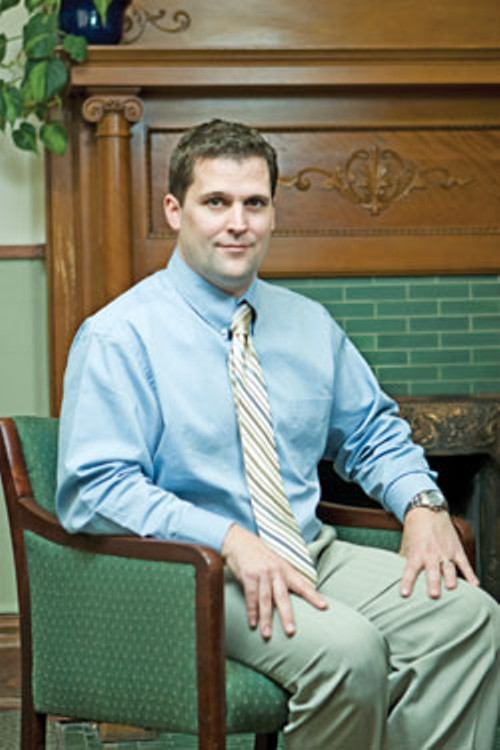Page 3 of 4
Needle and the Damage Done
Treating addictions to oral painkillers and heroin is essentially the same, Joel Millard says, executive director of Project Reality, a nonprofit drug treatment and prevention agency in Salt Lake City. “They are all opiates and the same receptor site [in the brain] is involved,” he explains.
It’s when addicts run out of their “easy supply” of pills and start suffering from withdrawal that heroin becomes a seemingly logical option, Galway says.
Buying heroin is strictly dangerous business. “You call a number where the guy gives you a name, but you don’t know if it’s real,” Graham says. “You say how much you want. He names a place and tells you what kind of car to look for. You park in the parking lot and wait. When the car gets there, you follow it, and they drive around for a little bit to make sure you are the one who called. They’ll pull over and ask how much you want. They throw the stuff into your car, and you throw the money into their car, and they drive off.”
Drug counselors say buying heroin is often an addict’s first criminal activity. “Though it’s hard to say which came first—criminal thinking or addiction—a lot of them don’t have criminal histories prior to their addiction,” Schmidt says.
Howell was initially arrested for stealing money from her place of work. Graham’s first arrest was for identity theft. Both broke the law to buy drugs. Along with being inexperienced at criminal behavior, many addicts are students or have jobs.
| IHC Counselor Lewis Galway | Odyssey House assoc. director Eric Schmidt |
John Rogers says he held a job and lived in an upscale Salt Lake City neighborhood while feeding a heroin addiction. Rogers, who asked that his real name not be used, started with Lortab abuse, stealing pills from his relatives’ medicine cabinets. Once he found heroin, nothing else compared. “Shooting heroin is like taking an elevator from the 100th floor to the first floor in two seconds. Swallowing a pill and waiting 20 minutes doesn’t come close,” he says.
Rogers, 43, never had trouble finding the drug. “Sometimes, you can score immediately. At the most, It takes 20 minutes to find heroin,” he says, recalling buying it in downtown’s Pioneer Park.
The drug’s accessibility contributes to the struggle toward recovery, he says. “Knowing that you can feel better in 20 minutes, it’s hard to face six months of hell from cravings and withdrawal.” Graham and Howell tried to keep up with school while using, but it was impossible. They missed classes; they lied to teachers. Howell says she withdrew from heroin three separate times.
“I couldn’t eat or drink. I thought I was dying,” she says. Eventually, after serving five months in jail for theft, Howell voluntarily transferred to Odyssey House for treatment. “I just didn’t want to be in jail anymore,” she says.
Howell is using her real name for this story. Both Graham and Rogers chose to use pseudonyms because they feel that revealing their addictions could threaten their ability to earn a living.
More than 80 percent of Odyssey House clients are referred from the courts after criminal behavior—typically on charges of drug possession, distribution, theft or prostitution.
The life experiences and support system for an addict can help or hinder treatment, Schmidt says. “While some addicts still have a conventional home life and can approach recovery with 15 or more hours of outpatient treatment a week, some lack a stable recovery environment.” That means they have lost their homes, alienated families and are couch surfing from place to place.Before she went to Odyssey House, Howell’s parents had kicked her out. She was living in her car and was in and out of jail. Rogers’ wife discovered his double life when he suffered a bad drug reaction and had to go to the emergency room.
Rogers has been through treatment at 12 rehab centers. He has been sober now for six months. His track record is spotty, but he is feeling hopeful, and his wife has allowed him to move home.
Along with both inpatient and outpatient treatment, Rogers attends meetings of Narcotics Anonymous and Alcoholics Anonymous. Rehabilitation is a tenuous process, and the possibility of relapsing is always present.
Howell and Graham have each completed programs at Odyssey House. Howell has been sober for six months—her longest recovery ever. Graham worked his way through an Odyssey House program and has been sober for 21 months. He enjoys simple pleasures—going to a football game, eating a good restaurant meal. But the thought of relapsing haunts him.
“I’m an all or nothing type guy. One pill here or there, and I’d be back to everyday use. It’s such a slippery slope that it’s not even an option.”
More by Carolyn Campbell
-
Dating counselors help singles move past relationship hiccups and get to the next date.
Looking for Love
- Feb 7, 2024
-
How DNA experts and law enforcement uncover hidden identities.
Written in Bone
- Jan 24, 2024
-
City Weekly's year-end guide to getting through the holidays and closing out those Christmas lists.
Gift Guide 2023
- Dec 6, 2023
- More »
Latest in Cover Story
Readers also liked…
-
Forget the family pedigree—Robert F. Kennedy Jr should not be the next president of the United States
Trojan Horse
- Jun 21, 2023
-
Women decry harassment and toxic culture at St. George auto dealership
Men at Work
- Oct 11, 2023






